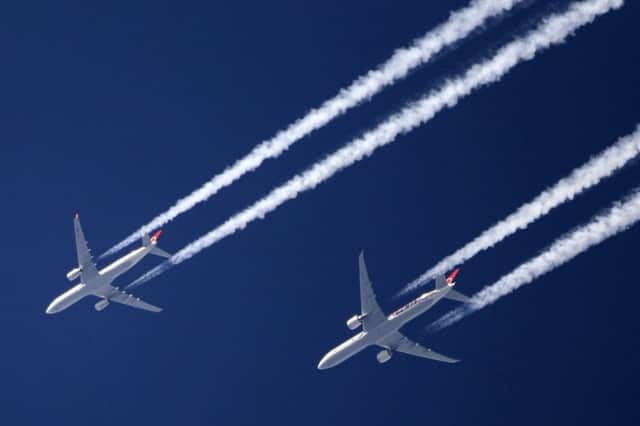Fly moves make for fuel savings


Do you ever feel guilty about the effects that choosing to fly has on the environment? Have you wondered how much fuel the plane is actually using? Is there something that can be done to reduce the amount of fuel that planes burn?
As airlines work hard to reduce their fuel burn and CO2 emissions, we at NATS have also been coming up with ways to help, using air traffic control initiatives to play our part.
Advertisement
Hide AdAdvertisement
Hide AdAs you may already know, airlines have to create a flight plan to input into air traffic control systems before a flight departs. What you may not be aware of however, is the fact that our controllers are able to give airlines far more direct routes, effectively a shortcut, in order to reduce the miles flown and save both fuel and time.
The height at which a plane flies also affects the amount of fuel used and our controllers have for years been directing aircraft to fly at the optimum height, even though it may differ from that specified in the flight plan.
According to standard procedures, airlines have to calculate how much fuel they’ll need according to their original flight plan – not taking into account tactical shortcuts – and so historically, they were taking on more fuel than needed, and it costs fuel to carry fuel. However, in the last few years this has changed, with some of the shortcuts we would suggest being incorporated into flight plans and therefore reducing the miles flown, as well as the environmental impact.
Locally from Prestwick, we have also taken a collaborative approach with the Scottish airports to enable planes to use Continuous Descent Operations (CDO), burning less fuel as well as reducing noise on the ground. In the past, planes would have taken off and then levelled off before ascending again, all of which would burn more fuel than the continuous climbs which are now the norm.
From our control centre in Prestwick, we also manage the air traffic half-way across the Atlantic Ocean and through a Collaborative Agreement with NAV CANADA (the Canadian air traffic control provider) we have recently installed a new system at Prestwick, one which provides additional and innovative tools for controllers to use. These tools allow controllers to offer aircraft crossing the Atlantic the optimum flying altitude for their type of aircraft in order to minimise fuel burn.
It is early days but we already have evidence that more aircraft are getting and accepting heights which burn less fuel and, combined with another new tool that was recently introduced, our controllers can offer aircraft the chance to fly 8,000ft higher than previously, which again results in aircraft using considerably less fuel than at a lower height.
And we’re not done yet. In the new year we’ll be introducing a revolutionary way for airlines to plan their routes with a concept called Free Route airspace. Effectively this means the removal of some of the constraints currently placed on the ‘motorways’ in the sky. This will be launched first in Scottish airspace before being introduced across the rest of the UK and should result in even more environmental savings.
We have already achieved our target of a reduction in the average carbon footprint of air traffic management per aircraft in the UK by 4% by the end of 2014 and all of these efforts are now in service of our next target – a reduction in the average carbon footprint of air traffic management per aircraft in the UK by 10% by the end of 2020, which would result in over 2million tonnes less of CO2 being produced per year.
Advertisement
Hide AdAdvertisement
Hide AdSo there’s lot going on behind the scenes at NATS to reduce the impact that flying has on the environment. Hopefully you can now feel a bit less guilty about the impact on the environment next time you fly!
• Paul Peers is Head of Development at NATS Prestwick
www.nats.aero
SEE ALSO